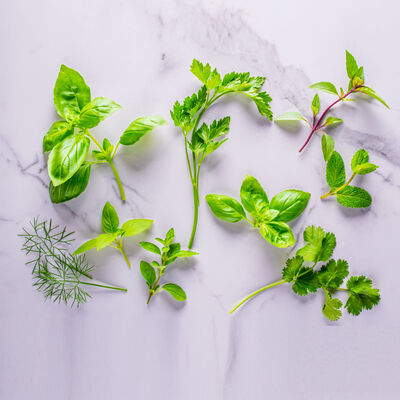
Air drying, oven drying, and freezing, oh my!
Rather than let your excess herb harvest go to waste, here are three ways to save them for later.
We cook with loads of fresh herbs in summer, but sometimes we find that we’ve snipped or bought more than we can use right away. Rather than let them go to waste, here are three ways to save herbs for later.
Air Drying: Drying works well for herbs like oregano, thyme, marjoram, and sage. Before drying, shake to remove dirt and discard any withered leaves. (You can gently wash the herbs, but be sure to dry them thoroughly to prevent mildew.) Secure the stems together using twine or a rubber band and hang upside down in a warm, dry, well-ventilated place away from sunlight. If you don’t have a dark spot, or if dust is a concern, you can cover the bundle with a paper bag; just ensure that there is enough space for air to circulate. Leave to dry until the leaves crumble, anywhere from 1-4 weeks. Store in an airtight container for up to a year.
Oven Drying: Although we prefer the above method because it doesn’t use any energy (and there’s something romantic about hanging herbs to dry!), oven drying is faster than air drying and a good option for those living in humid environments. To oven dry, spread herbs on a baking sheet lined with parchment paper (metal can affect the flavor) and place in a 150° F oven with the door slightly ajar. Check herbs frequently and remove when crumbly; it may take between 1-4 hours. Store in an airtight container for up to a year.
We’ve also read about microwave drying but cannot vouch for it ourselves – readers?
Freezing: Freezing is the best option for leafy herbs like basil, cilantro, parsley, and tarragon. One method consists of chopping the herbs, packing them into an ice cube tray, and topping off with broth or water. Another method is to blend the herbs into a paste with a little oil or water before freezing. Store frozen cubes in an airtight container in the freezer for up to 3 months.



